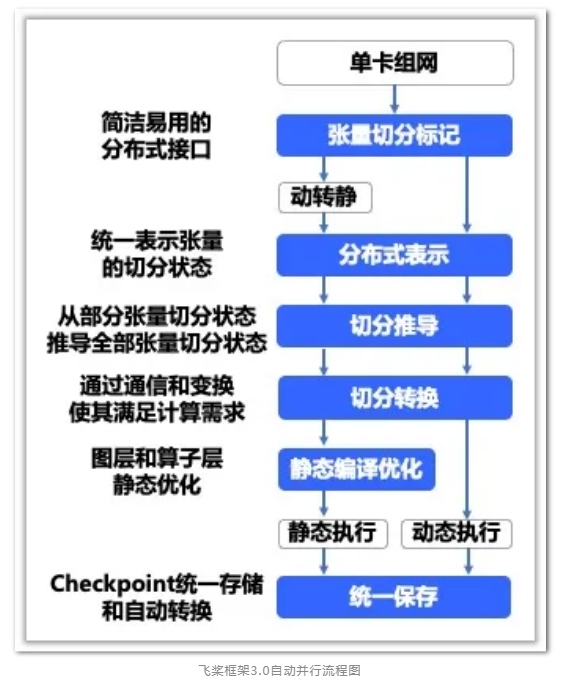Flying Paddle Framework version 3.0 is released. The core upgrade focuses on simplifying the development process of large model distributed training and significantly improving development efficiency. The editor of Downcodes learned that this version introduces dynamic and static unified automatic parallel technology, supports four-dimensional or even five-dimensional hybrid parallelism, covers data parallelism, tensor model parallelism, pipeline parallelism, group parameter slicing parallelism and other methods, greatly improving large model training efficiency. In view of the complexity of multi-dimensional hybrid parallelism, Flying Paddle Framework 3.0 cleverly proposes an automatic parallel technology solution, which effectively reduces the development difficulty of distributed training.
The Flying Paddle Framework version 3.0 recently released a core upgrade, introducing dynamic and static unified automatic parallel technology, aiming to simplify the development process of large model distributed training and improve development efficiency.
The new version supports four-dimensional or even five-dimensional hybrid parallelism technology, effectively improving the distributed training efficiency of large models through multiple parallel methods such as data parallelism, tensor model parallelism, pipeline parallelism, and grouped parameter slicing parallelism. In response to the complexity of the multi-dimensional hybrid parallel development process, Feipiao proposed an automatic parallel technology solution. Through the syntax tags of tensor segmentation, the framework can automatically derive distributed segmentation states and add communication operators, significantly reducing the time required for distributed training. Development difficulty.

The automatic parallel principle of Flying Paddle Framework 3.0 includes key links such as distributed tensor representation, segmentation derivation, segmentation conversion, etc. It supports re-segmentation capabilities and allows distributed tensor conversion across ProcessMesh. At the same time, the framework provides a unified dynamic and static execution mode, supports the conversion from dynamic graphics to static graphics, and takes into account development convenience and operating efficiency.
In terms of performance optimization, Flying Paddle Framework 3.0 supports a variety of strategies, such as operator fusion, pipeline orchestration and scheduling, communication-computing overlap, communication fusion, etc., which can be enabled through configuration options to further improve distributed training performance.
Paddle official website: https://www.paddlepaddle.org.cn/
All in all, the automatic parallel technology and multiple performance optimization strategies of Flying Paddle Framework 3.0 will greatly simplify the development and deployment process of large models, bringing developers a more convenient and efficient experience. This is of great significance for promoting the development and application of large model technology.